[ad_1]
This story, a partnership between the Center for Public Integrity and Grist, is the third in a soil lead-contamination series that began at Grist (read parts one and two). Reporter Yvette Cabrera has investigated lead’s impacts for eight years.
The news came as a shock: Lead, lurking somewhere in Nalleli Garrido’s home, was poisoning her 1-year-old son.
His pediatrician instructed her to clean all the toys of her toddler, Ruben, keep the home dust-free, and prevent him from playing in the bare soil outside her rented bungalow in Santa Ana, California’s Logan neighborhood. She did all she could. But the dust kept sneaking in.
No one offered an alternative. The only solution she and her husband could find was to get out. In 2019, after two years of constant worry, they moved north to the city of Buena Park, buying a home with a grassy yard — not an exposed patch of soil like her Santa Ana front yard, where the toxic metal could be found in concentrations as high as 148 parts of lead per million parts of soil. California’s Office of Environmental Health Hazard Assessment considers 80 parts per million and above dangerous for children.
“I was terrified to take my son out,” said Garrido, a psychiatric nurse. “Even walking through the yard, I would tell my kids to hold their breath. ‘Don’t breathe that in, don’t breathe in the dust.’”
Across the country, the main advice given to families threatened by lead exposure in soil — keep your home clean — doesn’t work, studies show. And federal guidelines about such exposure have thresholds too high to protect children from irreversible harm. But from coast to coast, community leaders, health advocates, and academics are pressing for true solutions — and an end to poisoning children with lead, generation after generation after generation.
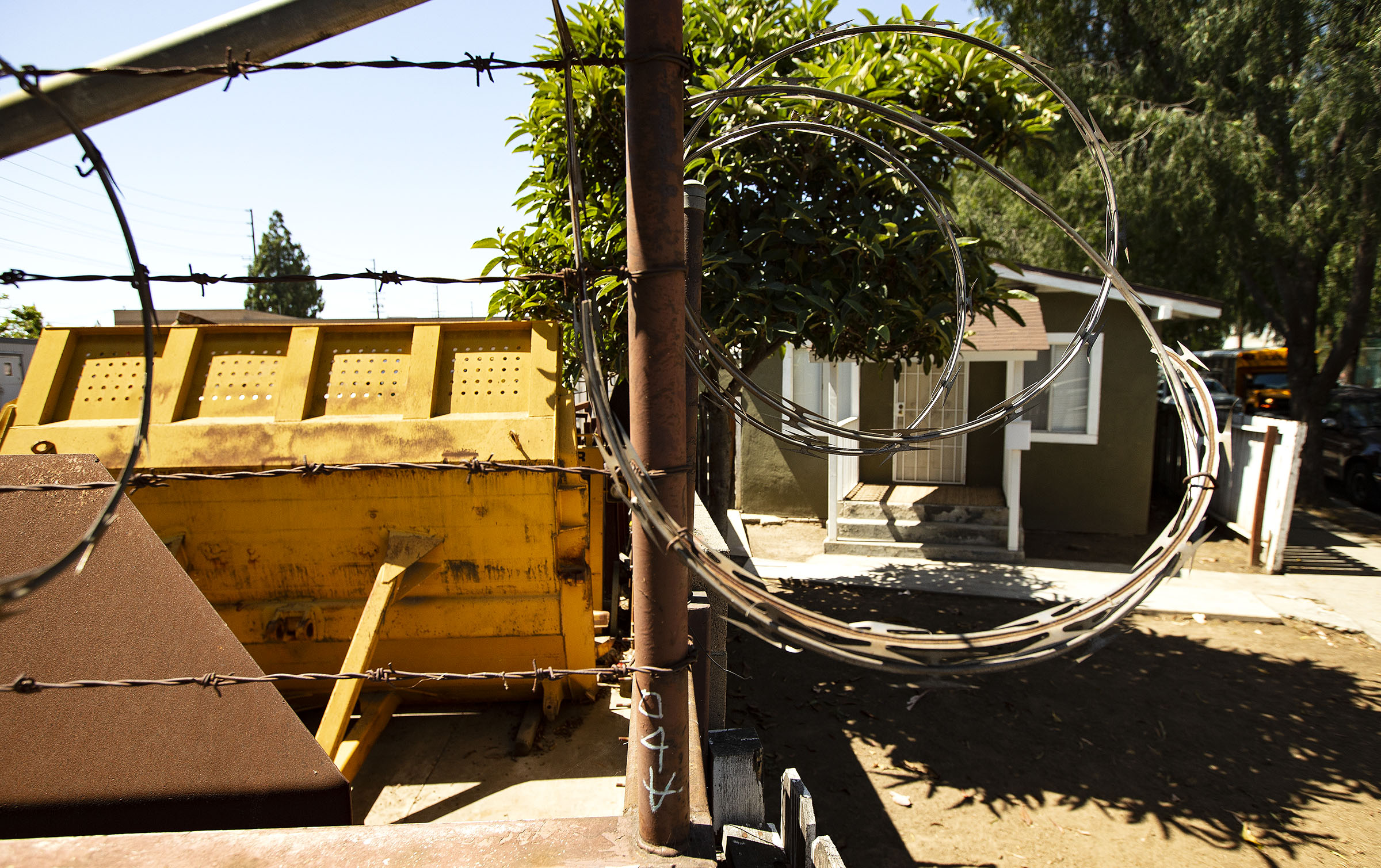
Daniel A. Anderson / Center for Public Integrity
Scientists are partnering with residents to gather soil lead samples for a national map showing hot spots. Some cities offer clean soil for covering lead-contaminated dirt in yards, protecting children and adults from further exposure. And in Santa Ana, a coalition convinced city officials to start treating the environmental hazard as a priority.
“I think we should recognize these violent and dangerous and toxic legacies that we inherit, and then do things that really make sense to keep ourselves safe,” said New York City soil expert Sara Perl Egendorf, who helped create a network called Legacy Lead to tackle contamination there.
Decades of research have shown the lasting harm for children exposed to lead, from brain development impacts — the capacity to learn, focus, and control impulses — to later health risks like coronary heart disease. No amount, scientists say, is safe. Yet parents such as Garrido, many living in urban areas across the country, are caught in a seemingly unwinnable battle to protect their children from this invisible neurotoxin.
Lead poisoning is often considered a problem of the past. But its legacy lingers today, the result of corporate decisions and lagging government action. The lead pumped out of exhaust pipes and industrial smokestacks decades ago can still be found in soil, and lead paint used extensively throughout the first half of the 20th century remains on the walls of many homes, degrading to chips and dust. The U.S. began phasing out lead in automobile gasoline and consumer paint in the 1970s, but new lead pollution continues to be dumped on communities every year from industrial sites and the aviation gas used by small aircraft.
One in every two American children under the age of 6 who were tested between late 2018 and early 2020 had detectable levels of lead in their blood, and studies show soil exposure is a major reason. Because lead contamination is more common in low-income neighborhoods, the people living there, disproportionately Black and Latino, face higher risks of the consequences.
“This is a chemical shackle on generations of children that are going to be born into these communities if you don’t clean up this lead.”
— Jane Williams, executive director of California Communities Against Toxics
That’s what motivates the people calling for and taking action. There’s no time to waste.
“This is a chemical shackle on generations of children that are going to be born into these communities if you don’t clean up this lead,” said Jane Williams, executive director of the environmental justice nonprofit California Communities Against Toxics.
The solution she wants to see: officials getting ahead of the problem by using data they already have to identify and clean soil hot spots, instead of reacting after the fact to individual cases of poisoned children.
“You know where the problem is,” Williams said. “You know what the problem is doing. You know what it’s impacting. You know what the social cost is. You know all these things — and you do nothing as either state government, local government, or federal government.”
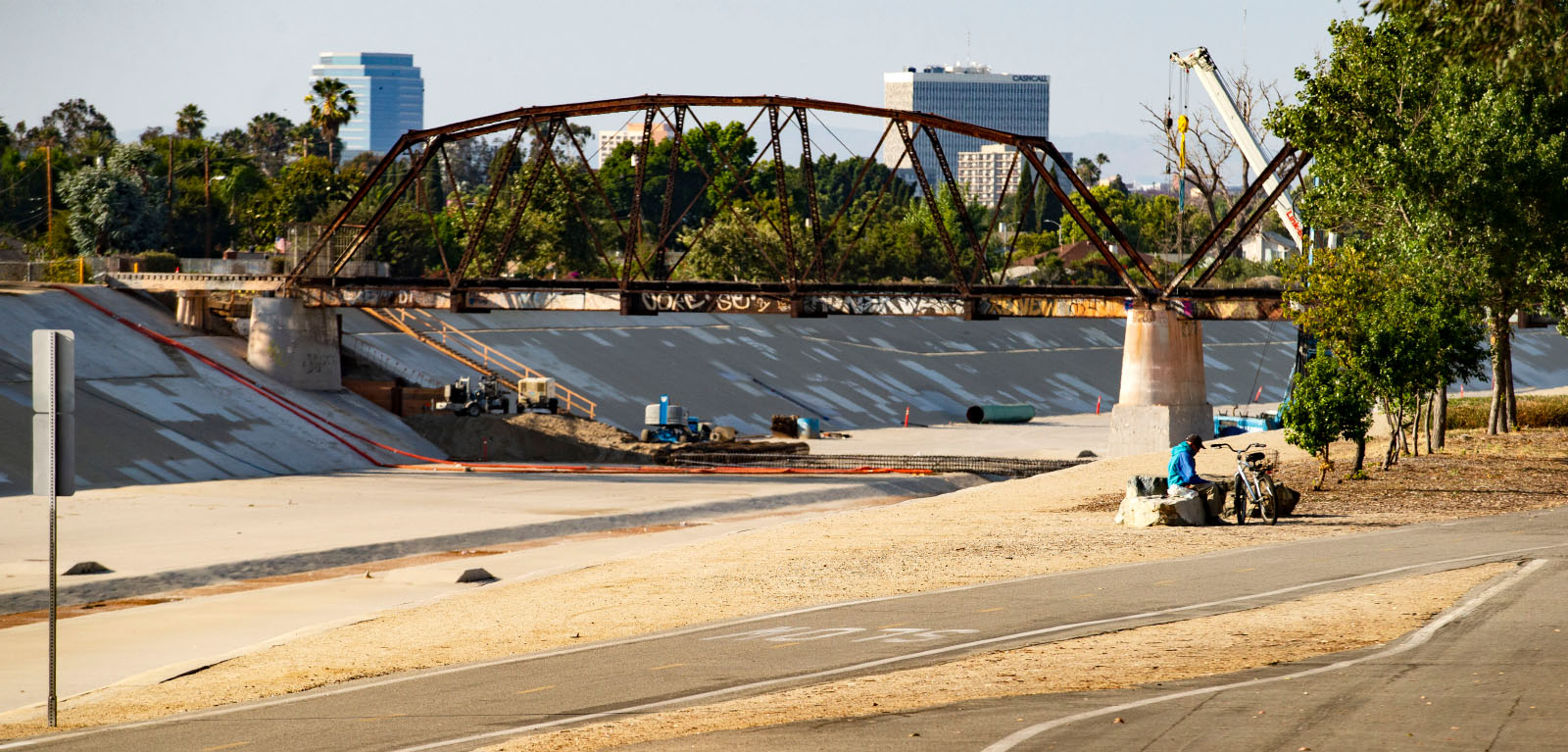
Daniel A. Anderson / Center for Public Integrity
Playground of poison
Lead doesn’t break down into something safer as it sits in soil, which is why it’s so critical to remove it or cover it with clean soil to stop exposure. When lead settles into the top layer of dirt, scientists have found, it can remain there for decades, if not longer.
Because it binds to the soil particles, wind that kicks dirt and dust into the air can reintroduce the lead into the atmosphere and spread the contamination, soil lead expert Howard Mielke of Tulane University’s School of Medicine wrote in a 2021 article he co-authored in the scientific journal Elementa.
His research in New Orleans has shown that lead levels in exposed people’s blood increase rapidly when the soil lead levels range between nearly zero and 100 parts per million, well below the U.S. Environmental Protection Agency’s 400 parts-per-million threshold. Blood lead levels flatten out with higher exposure.
Garrido’s yard in Santa Ana, where lead levels ranged from 33 parts per million to as high as 148, was a source of continual struggle after her son’s pediatrician told Garrido that lead was in his blood. The levels weren’t high enough for him to qualify for intervention services from the local public health agency, but were still concerning. He was later diagnosed with speech delays and began speech therapy.
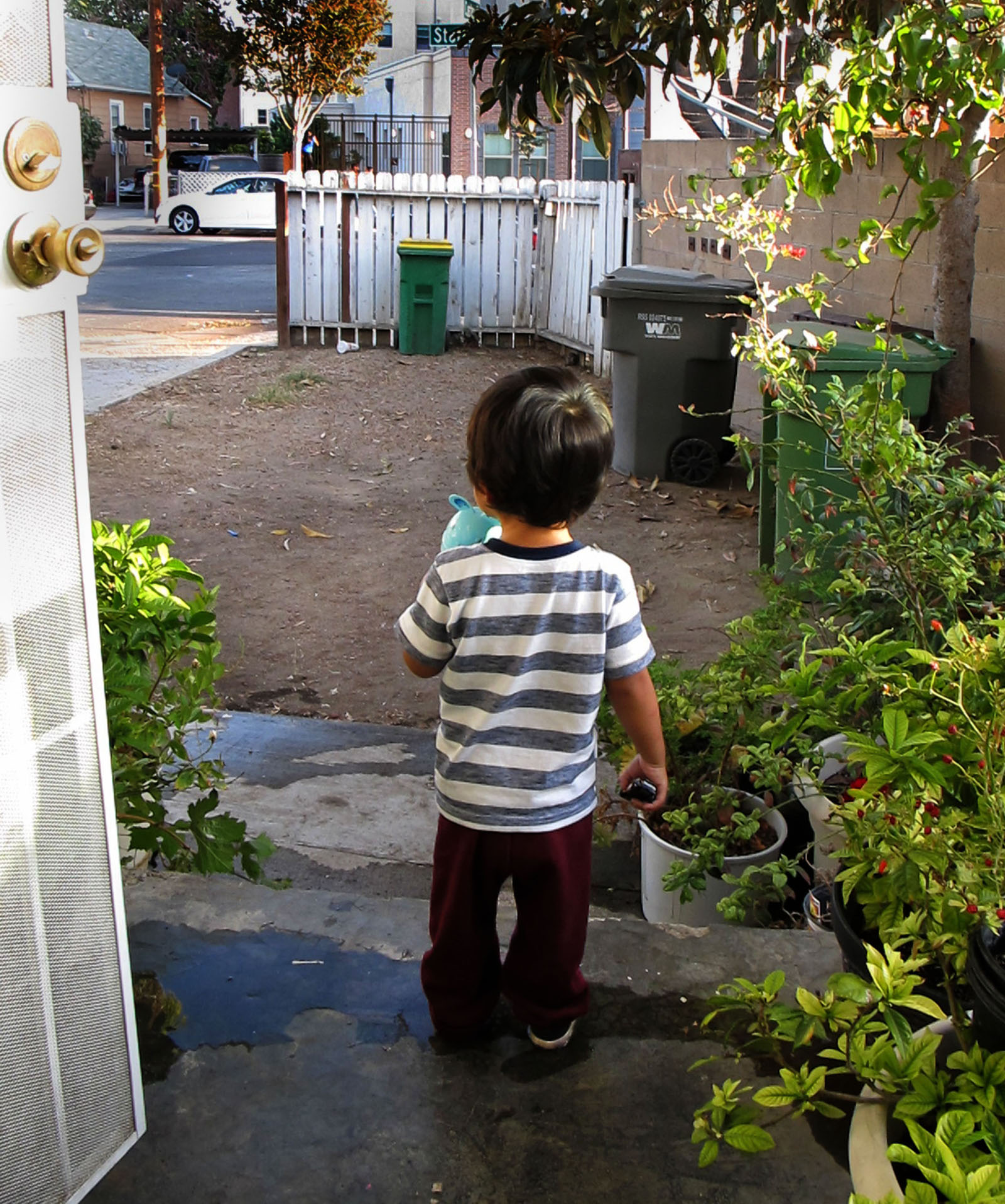
Yvette Cabrera / Center for Public Integrity
When Garrido’s family first moved into the rental, the front yard had some grass, but drought conditions that followed had left it barren: a playground of poison where she refused to let Ruben go.
“I don’t let him out at all, but no matter what I do, even when we keep the door closed all the time, so much dirt gets in. It’s right there. It’s maybe two feet away from my doorstep,” Garrido said before she moved.
She cleaned her kitchen counters daily. A thick layer of dust would soon reappear.
She vacuumed the small rug in her home three times a day, and it still wasn’t enough.
Between the barren soil in the yard and the dust and pollution kicked up by construction industries along the major boulevard behind her home, she faced a losing battle. Calls to code enforcement, even the police, to report shops working past regular business operating hours didn’t resolve the problem.
Neither did reporting the soil lead levels to the owner of her rental. Garrido said he didn’t offer to remediate the soil and seemed upset that she had allowed this reporter to test it in 2018 as part of a Grist investigation. When asked for comment through the property-management company, the landlord did not respond.
“I think everybody has the right to health,” Garrido said, “but not everybody thinks that.”
In Garrido’s former community, organized residents are intent on getting the lead out.
Parents, environmental justice advocates, and academic scholars have spent the past five years working together to raise awareness about the dangers of exposure in Santa Ana. Their coalition — called ¡Plo-NO! Santa Ana! Lead-Free Santa Ana! — also conducted soil lead testing throughout the city and pressed city officials and the Orange County Health Care Agency to more aggressively address the problem.
The coalition’s soil lead testing, organized after a 2017 ThinkProgress investigation, confirmed that children in Santa Ana’s poorest areas are at higher risk of exposure. The 2020 study, led by a team of researchers at the University of California, Irvine, analyzed more than 1,500 soil samples collected throughout the city.
The coalition’s work paid off: In April 2022, the City Council approved an update to Santa Ana’s general plan that commits for the first time to comprehensively address lead-contamination hazards. The previous fall, the council took the unusual step of adopting a cutting-edge resolution declaring a climate emergency while simultaneously pledging to limit or prevent exposure to lead and other environmental toxins.
Even just acknowledging the widespread lead contamination in the city’s soils is a new step for the council, said Councilmember and Mayor Pro Tem Jessie Lopez, who introduced the resolution.
She first learned of the problem through her work with the public advocacy organization Orange County Environmental Justice, or OCEJ, part of the ¡Plo-NO! coalition. Lopez, elected to the City Council in 2020, said she was initially shocked to learn a few years earlier that Santa Ana’s soils were contaminated. Frustration followed as the city was slow to act.
Now, as an elected official herself, her goal is to ensure that the city addresses the land-use inequalities that create unequal exposure to pollution.
“We’re very much aware of bad decisions that have been made in the past,” Lopez said. “We are working really hard to change them, to make sure that moving forward we don’t do those things again.”
Coalition members have spent several years discussing lead policies with officials from the local planning department and the Orange County Health Care Agency, and have pressed to ensure that residents are included in that work. OCEJ, for instance, advocated for policies to protect renters from eviction while lead remediation occurs or from having their rent increased as a result.
As any activist working on a difficult problem could guess, the Santa Ana results are still a work in progress. But many of the changes that the coalition advocated for in the general plan update are concrete: The city now requires developers to provide information about a property’s prior use and history of hazardous materials so soil contamination can be remediated. It mandates buffers between heavy industry and residential areas. The city has also pledged to identify baseline soil and air contamination levels, secure grant funding to test soil and air, and create a public health plan to address environmental hazards in disproportionately affected neighborhoods.
“We’re really happy with the result,” said OCEJ Project Director Patricia J. Flores Yrarrázaval. “We pushed really hard over the last year. It was an uphill battle, and we were told at some points that our demands were unreasonable. To have them all met is a huge victory.”
The key to their success, she said, was creating a community movement that combined scientific evidence with powerful testimonials from residents. With impassioned call-ins during City Council meetings, residents pressed the city to act. Failing to do so would have allowed children to continue to be poisoned, Flores Yrarrázaval told councilmembers during one meeting.
Now, she said, “We’re in a lot better position as a community than we were before.”
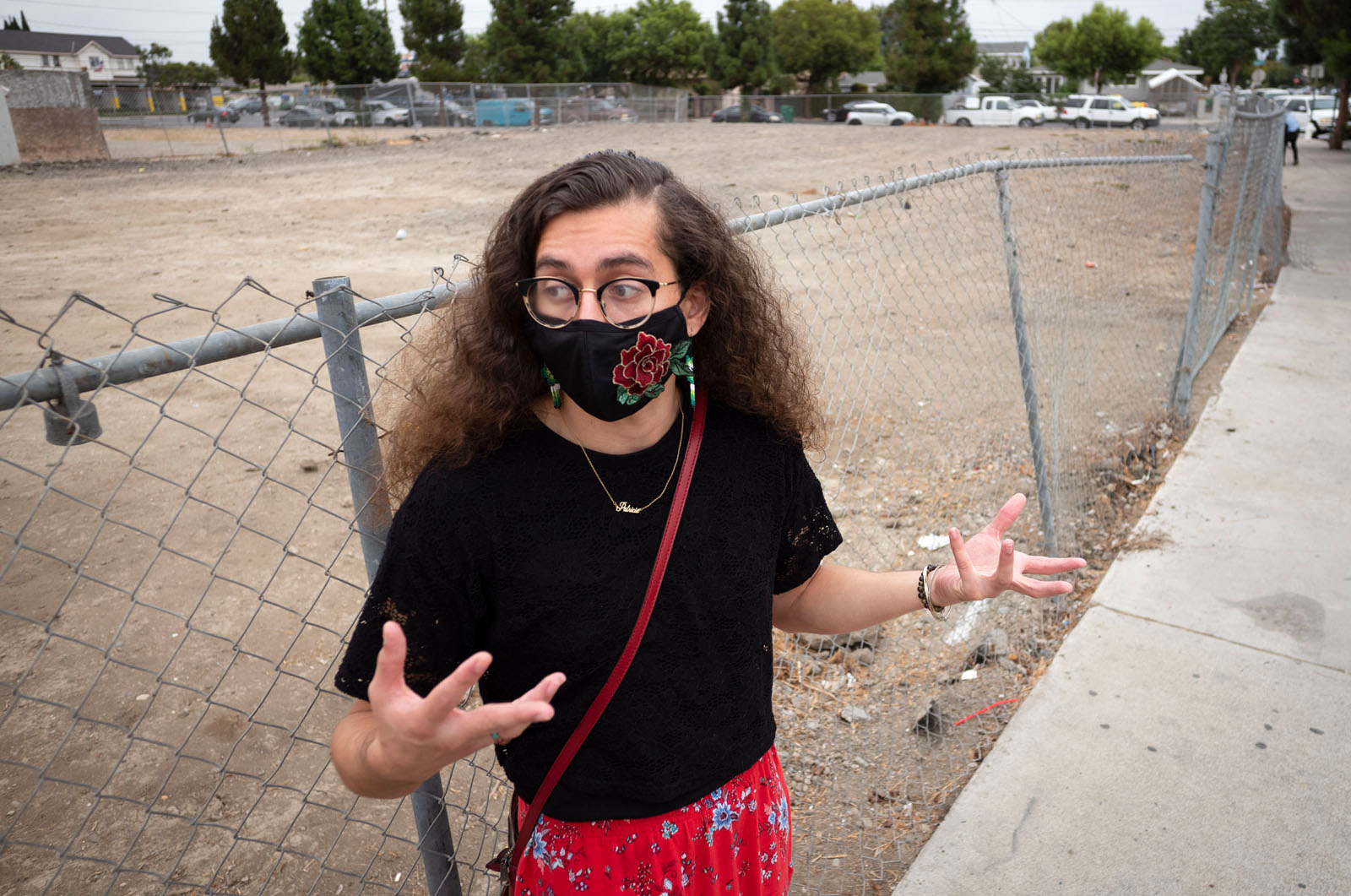
Daniel A. Anderson / Center for Public Integrity
In addition to its policy advocacy work, OCEJ has multiple projects underway to collect data that illuminates how widespread lead exposure is in Santa Ana, particularly among youth. The organization hopes to carry out blood lead testing and to conduct a study to measure tooth lead levels to understand cumulative exposure over a Santa Ana resident’s lifetime.
It still concerns coalition members that county health officials have been relying almost exclusively on existing blood lead level data to guide the Orange County Health Care Agency’s response to childhood lead exposure, said Alana M. W. LeBrón, an assistant professor of public health and Chicano/Latino studies at the University of California, Irvine, who has overseen the school’s soil lead research in Santa Ana. Studies have shown that many states fail to adequately test children’s blood for lead exposure, leaving vast numbers of children undiagnosed.
“If you’re only exploring cases where there is a diagnosis of ‘lead poisoning,’ then you’re missing this whole swath of people,” said LeBrón, referring to people who aren’t tested and cases that don’t trigger public health intervention because repeated exposures to lower levels of lead aren’t treated as the dangers they are.
Throughout, it’s been Santa Ana residents leading the charge for the community’s health, said Flores Yrarrázaval, and the battle isn’t over.
“We want to engage this fight on multiple fronts,” she said.
The power of community
The community-wide approach to eliminating lead poisoning that Santa Ana advocates want is the most effective way to protect children, soil lead experts say. It means pinpointing lead hot spots and focusing remediation neighborhood by neighborhood, instead of a scattershot approach after kids test positive for lead in their blood.
At the local level, municipalities can either make aggressive efforts to address lead contamination or take a lax approach, and the differences emerge in irreversible health impacts.
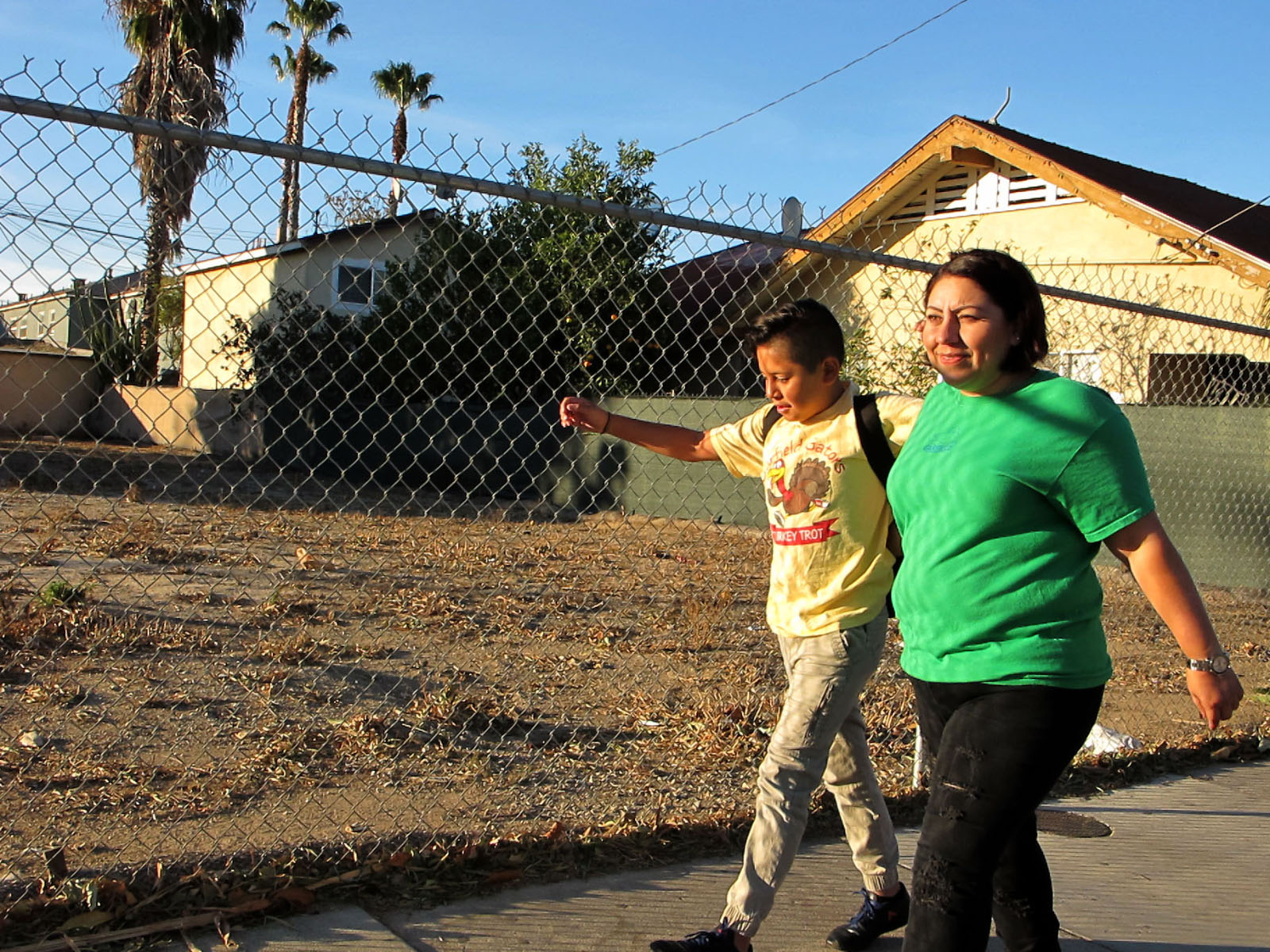
Yvette Cabrera / Center for Public Integrity
Harvard University sociologist Robert Sampson extensively researched lead exposure in Chicago neighborhoods and the inequalities created by unequal exposure to polluted environments. He points to the Chicago Department of Public Health as a role model because the agency didn’t wait for the federal or state governments to intervene.
“I consider the health department there to be kind of a hero in an important way in the lead story, because starting roughly in the ’90s, they vigorously tested and attempted to regulate the sources of lead exposure in the city,” Sampson said.
The agency collected tens of thousands of blood tests, monitored this data to focus on neighborhoods most impacted by lead poisoning, offered case management to lead-exposed children, conducted home inspections, and addressed lead hazards.
While Chicago’s public health agency has focused on lead paint, its partners at state and local agencies zero in on soil lead contamination. For example, Chicago requires those who buy city-owned property to look for soil hazards and remediate high levels of lead. That’s the type of all-hands-on-deck approach that needs to happen across the country, with multiple agencies collaborating, Sampson said.
It’s made a big difference in Chicago.
Lead exposure rates, which were extremely high and concentrated in the city’s poor Black and Latino neighborhoods, declined dramatically. One of every four children tested in 1997 had levels of lead in their blood of at least 10 micrograms per deciliter — a sign of high exposure. By 2021, that had dropped to one in 200 children.
“The rates are still higher in poor Black neighborhoods, but a poor Black neighborhood now is much less at risk than a poor Black neighborhood in 1995,” Sampson said. “That is an important victory.”
A national plan takes shape
Today, across the country, most county public health agencies approach lead exposure by testing children’s blood lead levels, not the environment, said Mielke, the Tulane University soil lead expert. Focusing on individual lead poisoning cases may appear to be more manageable. But this approach — which avoids investing in wide-scale remediation — uses children as canaries in the coal mine. It allows thousands to be exposed daily to contaminated soil in their backyards. And many are never even diagnosed.
Municipalities now have the scientific tools to measure lead in the environment and map hot spots so public health agencies can focus on preventing exposure before it occurs. Requiring proof of a lead-poisoned child before action can be taken to investigate and address the contamination is a flawed approach, Mielke said.
“We’re trying to cure the disease instead of preventing the disease,” said Mielke. And in the case of lead poisoning, there is no cure.

He uses Norway as an example of what can be accomplished in the war against lead when political will and scientific knowledge come together. Norway decided to ban lead from paint half a century before the U.S., in the 1920s, the same period when U.S. public health officials were debating whether to allow General Motors to use tetraethyl lead in gasoline as an additive. U.S. public health officials at the time knew the potential health hazards and understood that the toxic additive was a “serious menace to the public health” but still made the consequential decision to support its use in gasoline.
Norway used lower amounts of leaded gasoline, had less traffic, and built fewer highways. Faced with lead poisoning regardless, the country decided to focus its testing efforts on the environment, not children’s blood.
Almost 15 years ago, Norway’s environmental protection agency decided to systematically sample, analyze, and map surface soils in areas where children were most likely to be exposed to contaminated soil: childcare centers, school yards, and playgrounds in the country’s 10 largest cities, using Mielke’s research in New Orleans as the basis for this work.
Once soil tests confirm lead, Norway cleans it up. Norway also doesn’t require proof that a child has been lead-poisoned for the government to offer assistance, Mielke said. Having a lead-contaminated environment is enough to trigger government intervention and action to address the problem.
The U.S. could do this, too, Mielke said.
It simply hasn’t.
In theory, the agency best positioned to stop a nationwide epidemic of lead poisoning in this country is the EPA.
In 1992, Congress directed officials there to set standards for soil lead levels. It wasn’t until 2001 that the agency carried out the order. And the rules have not been updated since their release 22 years ago.
Repeated studies have shown that no amount of lead exposure is safe — and at the very least should be dramatically lower than the EPA’s threshold of 400 parts of lead per million parts of soil. But public health agencies around the country use the EPA’s standards to decide whether to remediate a lead-contaminated yard after a child is exposed.
EPA Deputy Assistant Administrator Carlton Waterhouse oversees the agency’s work on solid waste and remediation. He said it’s challenging to tackle a problem that originates at a local level but is pervasive across the country. The response to lead contamination by local and state agencies varies substantially, he said, and the lack of a federal clean-soil law — something like the Clean Air and Clean Water acts — means the EPA has no authority to sample and clean up all soils in the country.
“We don’t have any legislation or direction or funding that gives us a kind of comprehensive approach to say, ‘Let’s deal with the problem of lead,’” Waterhouse said.
Now, the EPA says it plans to finally “revisit” its outdated soil lead hazard standards. That reconsideration is part of a new strategy the agency announced in October to reduce lead exposures across the country and the racial and income disparities in who gets exposed.
The agency intends to tackle the problem in a way advocates have long called for: by using data to predict lead hot spots, including locations where children might get exposed, and then testing those soils. If that pollution meets the threshold of a Superfund site, then the EPA will remediate, Waterhouse said.
The agency is attempting to do what it can with the authority it has, he said, “recognizing that we don’t have the kind of footprint that allows us to do the testing of all the children by the time they start school, or to go into every home and test for lead-based paint.”
This means the agency is focusing its work in places where the EPA knows there are lead exposures through air, water, or soil. Funds to replace lead service lines, the pipes connecting a home to a water main, for example, were included in the $1 trillion infrastructure legislation that passed last year. But the new system doesn’t account for the untold number of sites overlooked by spotty data.
[Read: How the legacy of former industrial sites pollutes American cities today]
Critics also note the goals don’t commit the EPA to updating the outdated lead hazard standards, despite a federal court order in 2021 that requires it. The agency has not yet disclosed a timeline.
“Communities around the country are suffering lead exposure from soil because EPA has dropped the ball for decades,” said Eve Gartner, managing attorney for the Toxic Exposure and Health Program at Earthjustice, which represented more than half a dozen organizations whose lawsuit prompted the 2021 decision.
In March 2022, groups underwhelmed by the EPA’s then-draft strategy called on the agency to make a broader commitment to eliminate lead exposure in all communities and for people of all ages, because the dangers of lead are not limited to children. The coalition also pressed the EPA to address lead exposure from continuing pollution sources.
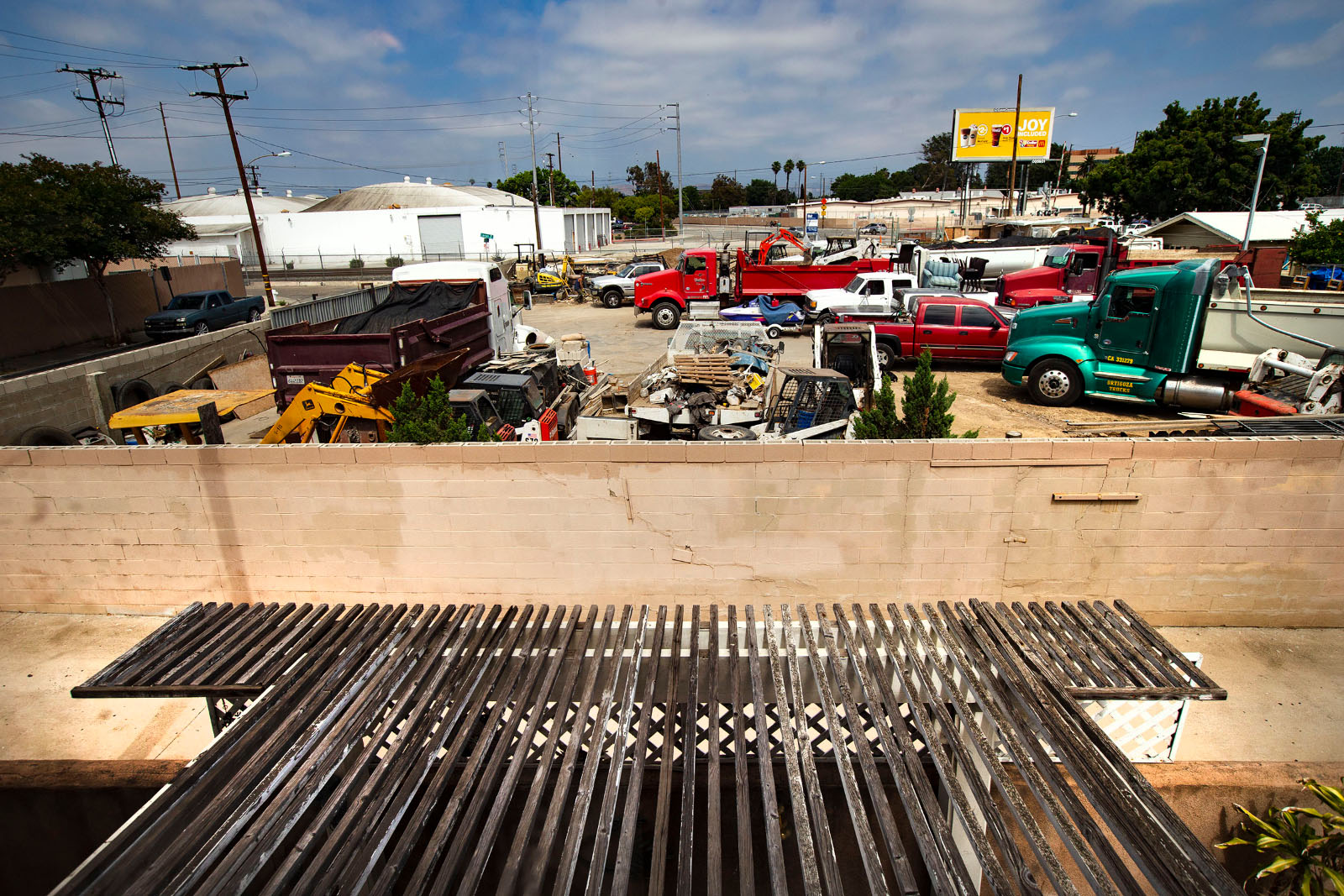
Daniel A. Anderson / Center for Public Integrity
“EPA will not prevent exposure to lead if it continues to view lead as a problem of a purely ‘legacy’ nature,” the coalition wrote in public comments submitted to the agency.
At Simon Fraser University in Canada, Professor Bruce Lanphear, an epidemiologist and leading expert on early childhood exposure to lead as well as the long-term effects on adults, is cautiously optimistic about the plan. But his hope is tempered by the agency’s history of lagging action.
“It’s long overdue, and we can’t blame one [political] party or another. They both failed miserably for so long,” Lanphear said. “And yet at the same time, are we at a turning point where we’ll really address not only the legacy of lead poisoning, but maybe the disparities as well?”
Lanphear has found that a headline-grabbing lead crisis, such as the water contamination in Flint, Michigan, prompts attention and funding. But the attention soon dissipates. The funding never reaches a level that would comprehensively address the widespread nature of the problem. And the insufficient lead hazard standards don’t help.
That concerns Lanphear, who has spent the better part of two decades researching and tracking the resulting health impacts. Very few toxic chemicals have been as consistently shown to harm children as lead, he said, and its effects are far-reaching.
Lanphear’s research has shown that lead might cause at least a quarter of a million early deaths a year from cardiovascular disease in the United States alone.
Ruth Ann Norton, president and CEO of the nonprofit Green & Healthy Homes Initiative in Baltimore, has spearheaded efforts to aggressively reduce childhood lead poisoning across the nation. What the country needs — and the EPA strategy is missing — are opportunities to tackle multiple problems at once, she said.
For example, the federal weatherization-assistance program could be coupled with a program to remediate lead in paint and soil, problems that typically get deferred because of cost. But the cost of inaction is high.
“Every community can do this. It is just simply making the decision to do something that they know is so fundamental to their future.”
— Ruth Ann Norton, president and CEO of Green & Healthy Homes Initiative
Communities can take creative actions now, Norton added. Her nonprofit manages a program in Pennsylvania with Lancaster General Hospital, which is paying $50 million to provide lead-hazard-control intervention in 2,800 homes.
“Every community can do this,” she said. “It is just simply making the decision to do something that they know is so fundamental to their future.”
Fighting soil with soil
Scientists are also trying to fill gaps created by insufficient government action. Knowing that most U.S. cities and towns lack a centralized database for soil lead tests, Gabriel Filippelli, a biogeochemist who has studied lead contamination for more than two decades, helped create an online platform where everyone, from scientists to residents, can share lead samples and test results.
Launched in 2018, the online portal Map My Environment visualizes this data, includes lead levels for soil, dust, and water pollution in cities around the world, and offers recommendations on how to remediate lead. “We just wanted a way to get this out of a static journal and into communities,” said Filippelli, an Indiana University–Purdue University Indianapolis professor who serves as executive director of the Environmental Resilience Institute.
Someone collecting dust samples can have them tested free by the initiative. Map My Environment also launched a school Bookworm Initiative, where students collect earthworms and soil for lead-contamination analysis, receiving a book voucher in return.
At a time when Americans are more aware of the dangers of lead due to Flint’s water crisis, most are unaware that lead too often contaminates soil in urban centers, Filippelli said.
“Water is actually a really rare thing to get affected by,” he said. “It’s really that soil and dust which is ever-present, which I think is the biggest thing. That’s the message we try to put out all the time, along with the fact that it’s really easy to solve.”
Change the soil surface in communities with high levels of lead, research by Mielke and others show, and you protect people’s health. In New Orleans, the city health department worked with Mielke to focus soil remediation in childcare centers, parks, and playgrounds by capping contaminated soil with clean soil. The city’s playground soils improved remarkably, Mielke said.
But because backyards weren’t included, they “remain very hazardous,” he said, and that is where “kids are likely to be when they are very, very young.”
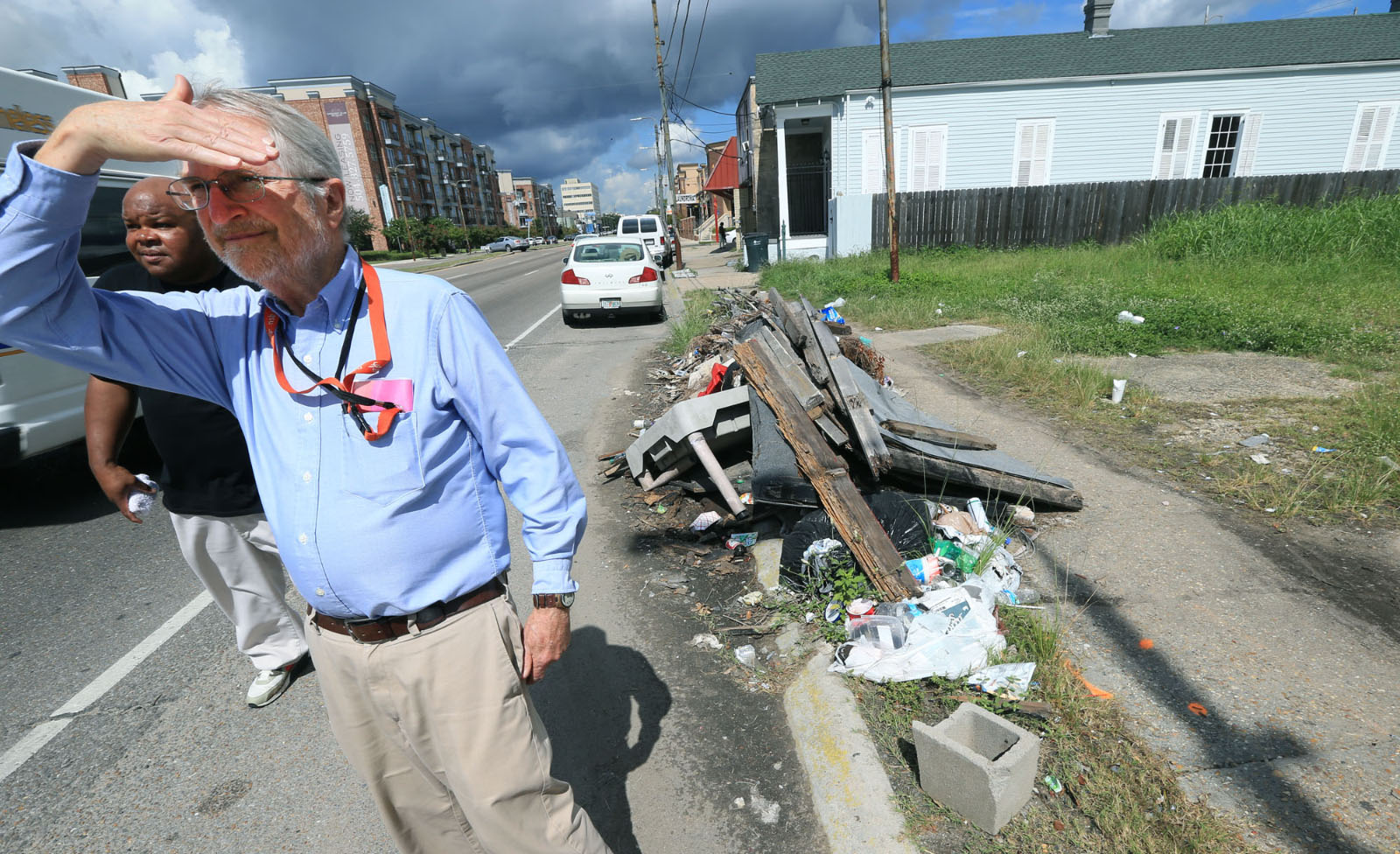
Daniel A. Anderson / Center for Public Integrity
To truly protect children’s health, studies have shown, soil lead concentrations across a community would need to fall below 80 parts per million, perhaps half that level, Mielke said. A 2017 study by geologist and environmental scientist Mark Laidlaw, Filippelli, Mielke, and their colleagues examined approaches to address urban soil lead contamination and concluded that collecting soil lead levels would not be necessary if soil with little or no lead were spread across entire neighborhoods.
In other words: Cover what’s there with better soil.
In New Orleans, Mielke has tapped the Bonnet Carré Spillway for lead-safe alluvial soil, sourced from the sediments of the Mississippi River, to cover hazardous areas. Most cities can access soil like that on the outskirts of urban centers, the study found. To pay for it, the researchers suggest levying taxes on gas and paint products, given that a large portion of lead in soils and home interior paints originated from these industries.
In New York City, where recent studies have confirmed local soil lead contamination, the NYC Clean Soil Bank offers residents free clean soil that’s been tested after excavation from New York City construction sites. Creating that system “has surprisingly been more feasible than trying to mandate testing or remediation,” said Egendorf, a researcher with the NYC Compost Project. “I would love for more people to know about it and for this to keep expanding because other cities can do it, too.”
What all these solutions show is that lead poisoning is preventable. The hardships from its health impacts don’t need to touch yet more generations.
It just takes action.
In Santa Ana, the environmental justice advocates pushing for exactly that say they are committed to reforming how soil lead contamination is addressed nationwide. LeBrón, the public health professor from the University of California, Irvine, said the coalition hopes to form an exchange so people across the country can learn from each other.
For Garrido, the solutions didn’t come soon enough. She would have gladly raised her son in Santa Ana if there were fewer risks to his health and safety.
Now 7 and in first grade, Ruben still has significant speech delays and is being assessed because he may have a learning disability, Garrido said, but he’s otherwise healthy.
And he can run freely on her Buena Park property without the risk of breathing or ingesting lead-contaminated soil.
“The neighborhood is safe enough. The sidewalks are decent where we can walk, so we take the dogs out for a walk and I take my son with me,” Garrido said. “It’s like a whole new world for him.”
This story was produced in partnership with the McGraw Center for Business Journalism at the Craig Newmark Graduate School of Journalism at the City University of New York. This report was also made possible in part by the Fund for Environmental Journalism of the Society of Environmental Journalists, and by the Kozik Challenge Grants funded by the National Press Foundation and the National Press Club Journalism Institute.
[ad_2]
Source link

